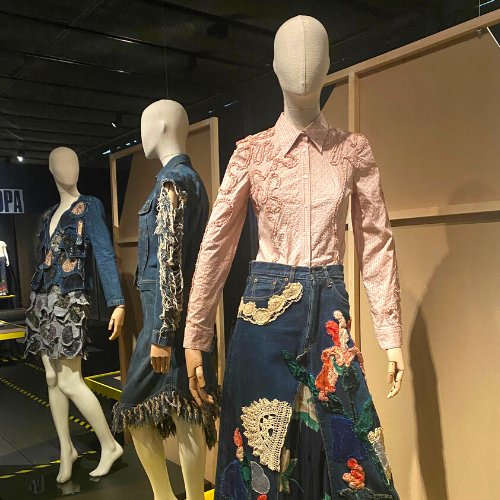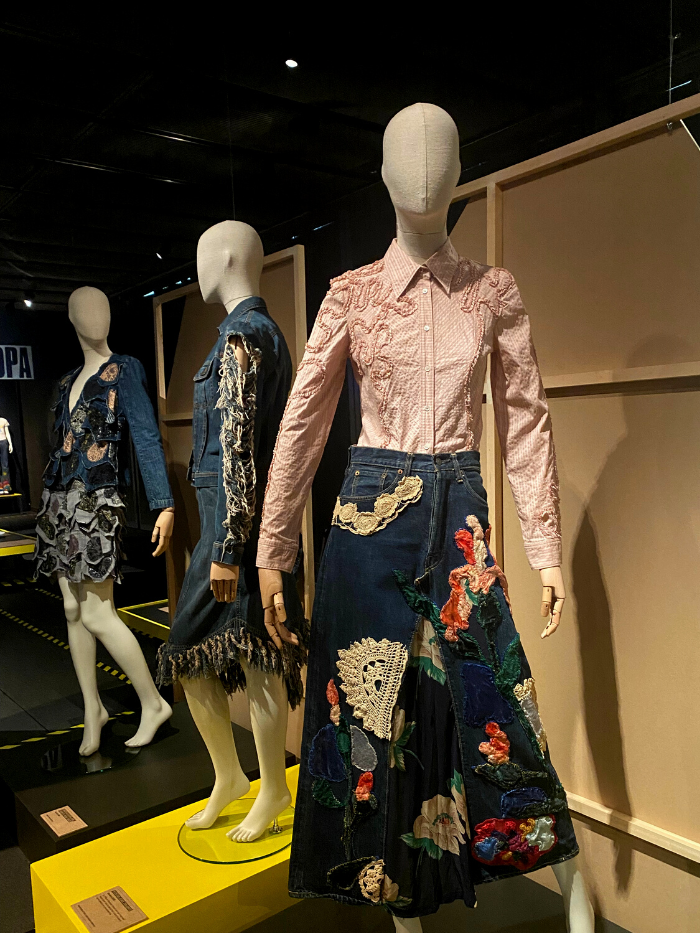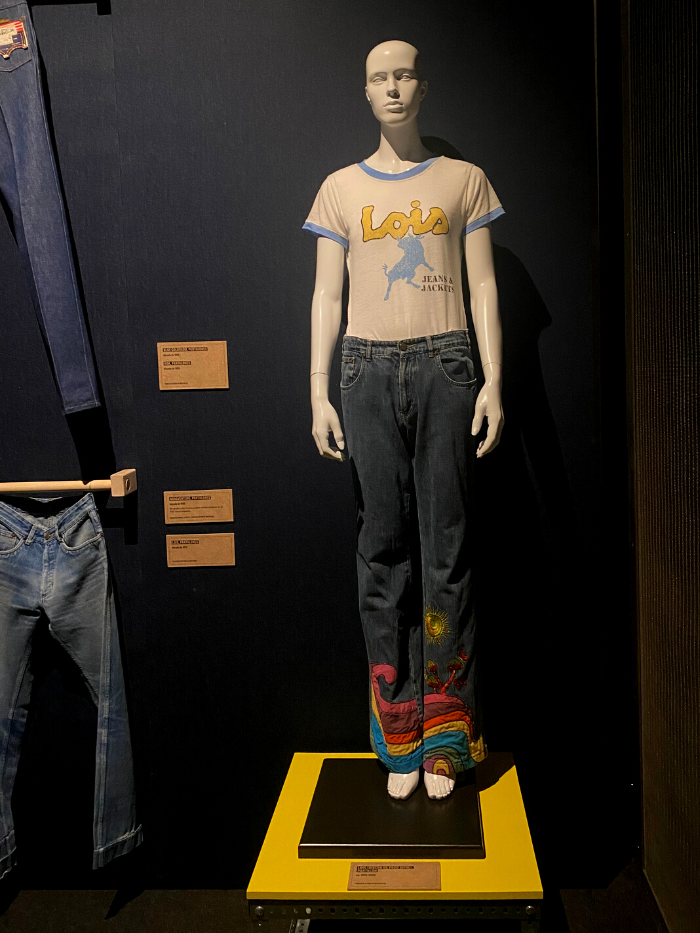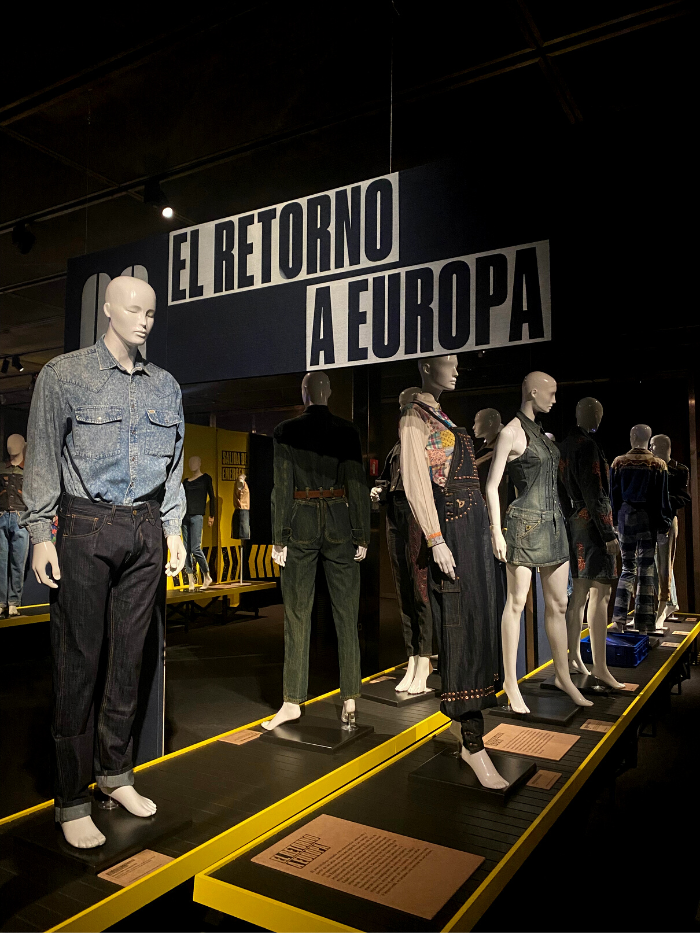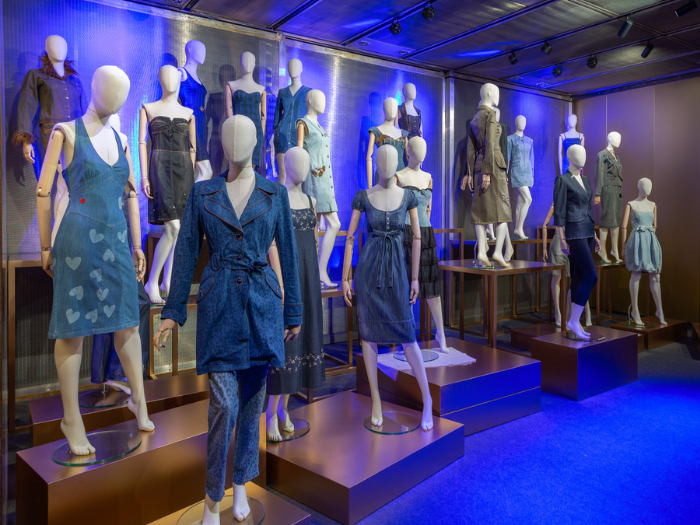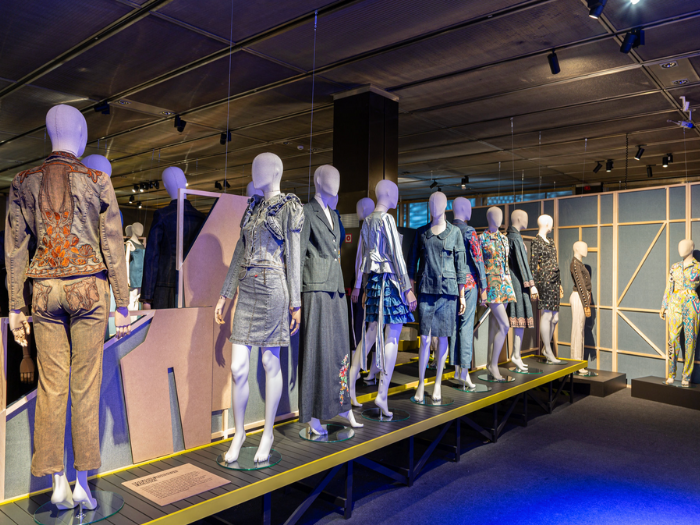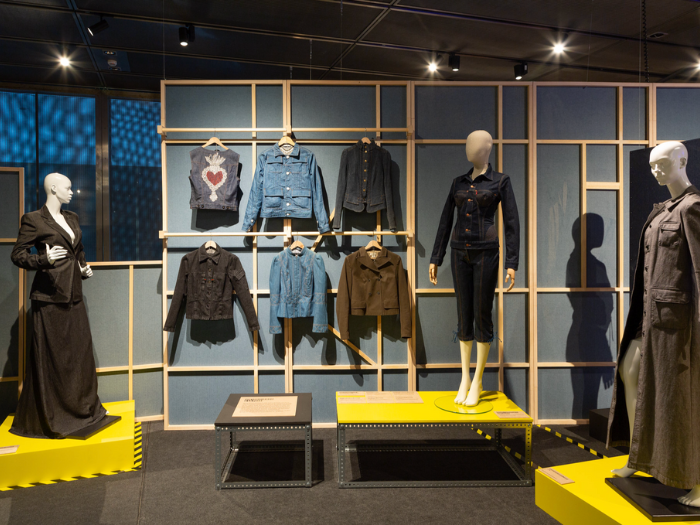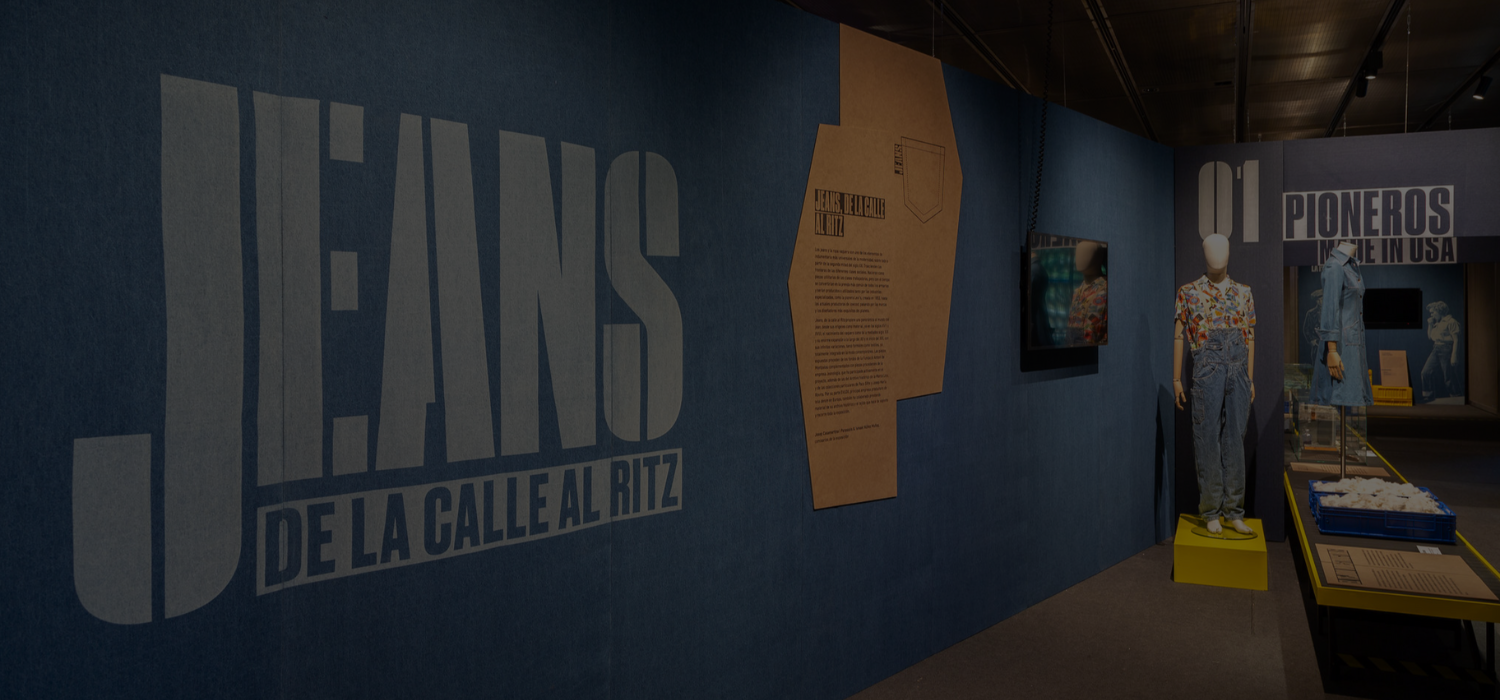
WHY DOES EVERYONE WEAR JEANS?
Paula Ramírez Jimeno, deputy director of the Museo del Traje, answers this question and accompanies Madrid Capital de Moda on a tour of the exhibition ‘Jeans from the street to the Ritz’, which can be visited until 17 March.
Jeans are a symbol that we identify with a relaxed, youthful attitude and that is precisely why they have become the icon of modernity par excellence from the second half of the 20th century to the present day, says Paula Ramírez Jimeno, pointing out that this exhibition, which has had numerous participants such as the Fundació Antoni de Montapalu, the collectors Josep M. Rovira and Paco Sifre, the historical archive of the Lois brand and the companies Jeanología and Evlox, tries to explain to us the reasons why this garment has always been among the most popular and worn garments. Rovira and Paco Sifre, the historical archive of the Lois brand and the companies Jeanología and Evlox, tries to explain to us the reasons why this garment is always among the favourite and most used in our wardrobe.
the true origin of denim
Denim is usually associated with American cowboys, so often portrayed in films, but the truth is that it originated in the 18th century when it was used to manufacture work clothes for miners and gold rush prospectors, who needed resistant fabrics that could withstand the harsh conditions to which they were exposed.
Moreover, Europe was more than relevant in its production and extension. In fact, the word denim comes from France from the city of Nîmes, while jean comes from Gênes, Genoa (Italy) said in French and this is due to the fact that they were places of origin of production of cotton twill, which is the base of the fabric, which was then dyed with indigo blue, one of the oldest natural dyes.
In the mid-19th century, Spain also began to produce this fabric, with the Vergara cotton mill (currently the Evlox company located in the Basque Country), one of the first Spanish production centres, which also exported its products to the United States, and which has lent historical pieces such as a shuttle and a machine for measuring the density of the fabric to the exhibition at the Museo del Traje.
Paula tells us that one of the most relevant pieces that can be seen in the exhibition is a 19th century denim bloomer on loan from Jeanología, another of the collaborators. The bloomer is one of a pair of trousers that early feminists began to wear under shorter skirts than those worn at the time. It is a garment that is even more revolutionary in denim, because it allowed greater freedom to the body and was intended to be worn in public.
much more than trousers & jackets
With the arrival of the 20th century, trousers and jackets continued to be manufactured following the model introduced by a Jewish wholesaler of European origin and a tailor in California, by incorporating copper rivets to the garments created in cotton twill, which made them more resistant, which led to them being used in other professions such as agriculture or livestock farming, in their dungarees version, extending their useful life by using patches. This served to define the concept of the blue collar, the workers’ style, as opposed to the white collar, associated with non-physical professions of a higher economic and social status.
From the 1940s onwards, denim trousers and jackets began to appear in Hollywood films, and this brought them to Europe. Legendary actors such as Marilyn Monroe (in films such as River of no return, but also in her private life) or Marlon Brandon, began to wear them on the big screen, linking them to a sexier and more rebellious model of beauty. This meant that in the 1960s, denim garments represented a real paradigm shift in fashion, driven by the baby boom generation.
jeans made in spain
In the 1970s, the importance of denim increased dramatically. Spain began to produce it exponentially in Valencia, the Basque Country, Catalonia and Castilla La Mancha, exporting much of its production to the United States. Lois associates with the music group ABBA, which it begins to dress before they win the Eurovision Song Contest, and once they have done so, they become the brand image, which helped this Spanish firm to make the great leap to the international arena.
Within the exhibition, Paula Ramírez Jimeno highlights a denim skirt from this period which is made from a disassembled trouser, incorporating elements such as crochet, chiffon and embroidery, demonstrating the importance of customisation which will revolutionise the subsequent treatment of these garments.
In the mid-1980s, another brand appeared on the Spanish market, in Barcelona, which would make denim fabrics and garments one of its flagships: Desigual. Originally, its creator made his garments with discarded jeans, something that can still be seen in the brand’s creations, and which can also be seen in the collaboration he would later make with Christian Lacroix.
DENIM SEEN IN HAUTE COUTURE
The deputy director of the Costume Museum tells us that Yves Saint Laurent used to say that he would have loved to invent jeans, and it is precisely from his statement “Down with the Ritz, up with the street” that the name of this exhibition comes from. Paula comments that normally in fashion, it is always the upper classes that set the models to imitate, however, in the case of denim, this aspirational movement has been reversed, and it is the more luxurious clothes that are going to imitate work clothes. This can be seen in the show, which features pieces created by important designers such as Calvin Klein, Dolce & Gabanna, Jean Paul Gaultier and Moschino, among others.
retos de futuro
Jeans have a dark side: they are one of the most polluting products in the textile industry, but it is precisely one of the areas that is making the greatest efforts in this regard, Paula Ramírez Jimeno tells us, highlighting the important role of Jeanología in the transition of denim towards a more sustainable model. This Valencian company continues to research into the ecological production of fabrics, looking for techniques that are less harmful to workers and the environment, such as ozone or laser, which replace pumice stone washing or sand projection.
For the deputy director of the Museo del Traje, Jeans from the street to the Ritz is a unique exhibition that presents a collection of historical garments and historical objects that allow us to take a round trip through the history of denim from a modern perspective.

